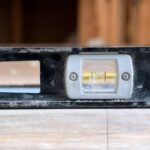In today’s increasingly connected world, having a strong WiFi reception in your home is of utmost importance. From streaming movies and playing online games to working remotely and video conferencing with loved ones, a reliable and fast internet connection has become essential in our daily lives. However, many households struggle with poor WiFi reception, leading to frustration and inconvenience.
This article aims to provide you with practical solutions on how to improve WiFi reception in your home. We will guide you through the process of assessing your current WiFi situation, understanding the root causes of weak signals and poor reception.
Additionally, we will explore various strategies to optimize router placement, upgrade your router to state-of-the-art technologies, minimize WiFi interference from common household devices, extend your WiFi range throughout your home, boost signal strength using repeaters and access points, optimize router settings for optimal performance, and troubleshoot common WiFi problems.
By following the advice and recommendations provided in this article, you will be able to achieve a strong and reliable WiFi signal in your home. So whether you are struggling with dead spots or slow speeds, this comprehensive guide has got you covered. Let’s dive in and enhance your WiFi experience.
Assessing the current WiFi situation
When it comes to improving WiFi reception in your home, it’s important to first understand the reasons behind weak signal and poor reception. By identifying the root causes, you can take targeted steps to address these issues and improve your overall WiFi experience.
Distance from the router
One common reason for weak WiFi signal is being too far away from the router. The range of a typical home WiFi router is around 100-150 feet indoors. If you are located far away from the router or there are multiple walls and obstacles between you and the router, it can weaken the signal strength.
To assess if distance is a factor, try moving closer to the router and see if the signal improves. If it does, you may need to consider relocating either your device or your router to a more central location in your home.
Interference from other devices
Another major cause of poor WiFi reception is interference from other electronic devices within your home. Devices such as cordless phones, baby monitors, microwave ovens, Bluetooth devices, and even neighboring WiFi networks can all impact signal quality.
To identify potential sources of interference, temporarily turn off or move these devices away from your WiFi router and observe if there is any improvement in signal strength. If there is a noticeable difference, try to minimize their impact by adjusting their placement or using wired connections instead.
Router age and capabilities
The age and capabilities of your router can also play a significant role in determining WiFi reception. Older routers may not have the latest technologies and features that can improve signal coverage and speed.
Take a look at your current router’s specifications including its wireless standard (e.g., 802.11ac), frequency bands (2.4GHz and/or 5GHz), and maximum data transfer rates. If your router is outdated or doesn’t meet your needs, consider upgrading to a newer model that supports the latest WiFi technologies for better performance and signal strength.
By assessing these factors, you can gain valuable insights into the reasons behind weak WiFi signal in your home. Understanding these root causes will help you make more informed decisions when it comes to optimizing your router placement, upgrading your router, minimizing interference, extending WiFi range, boosting signal strength, and optimizing router settings – all of which will be discussed in detail in the subsequent sections of this article.
Optimizing router placement
Optimizing router placement is crucial for maximizing signal coverage and eliminating dead spots in your home. Even with a powerful router, if it is not positioned correctly, the WiFi signals may not reach all areas of your house, resulting in weak reception or dead zones. This section will guide you through strategic positioning techniques to ensure optimal WiFi coverage.
Finding the central location
The first step in optimizing router placement is finding the central location in your home. Placing the router at a central point helps distribute the signal evenly throughout different rooms and floors. Avoid placing it near walls or corners as they can obstruct the signal and reduce coverage.
Elevating the router
Elevating the router off the floor can significantly improve its signal range. Placing it on a high shelf or mounting it on a wall can help minimize obstructions and interference from furniture or other objects. Additionally, placing the antennas perpendicular to each other can enhance signal propagation in multiple directions.
Minimizing obstacles
Obstacles such as walls, floors, and furniture can absorb or weaken WiFi signals. To optimize router placement, try to minimize these obstacles between your devices and the router. For example, if you have multiple floors, consider placing the router on an upper level to allow signals to travel more easily downwards.
Adjusting antenna positions
Most routers come with adjustable antennas that allow you to fine-tune their position for better coverage. Experiment with different angles and orientations to find what works best for your specific layout. For instance, positioning one antenna vertically and another horizontally may provide better coverage in both horizontal and vertical directions.
By following these strategic positioning techniques, you can maximize WiFi signal coverage in your home and eliminate annoying dead spots or weak receptions in certain areas. However, keep in mind that every home is unique, and experimentation may be necessary to find the optimal router placement for your specific setup.
Upgrading your router
In today’s fast-paced and connected world, having a strong WiFi signal is essential for smooth internet browsing, streaming, gaming, and even remote work or online learning. If you find yourself struggling with weak signal and poor reception in your home, it may be time to consider upgrading your router. This section will explore the latest WiFi technologies and best-in-class routers that can help improve reception and speed.
One of the first factors to consider when upgrading your router is the WiFi technology it uses. The most common WiFi standards are 802.11n, 802.11ac, and the latest 802.11ax (also known as Wi-Fi 6). Upgrading to a router that supports a newer WiFi standard can significantly enhance your WiFi experience. Wi-Fi 6 routers offer faster speeds, improved performance in congested areas with multiple devices, and better overall signal range compared to older standards.
When selecting a new router, it’s important to consider factors such as coverage area, number of simultaneous connections supported, and additional features like beamforming technology or MU-MIMO (Multi-User Multiple-Input Multiple-Output). These features contribute to better signal strength and improved stability throughout your home. Look for routers from reputable brands that are known for their quality and performance in consumer reviews.
Some of the top routers on the market include models like the Netgear Nighthawk AX12 or ASUS ROG Rapture GT-AX11000 for gamers seeking lag-free online gaming experiences. For users requiring excellent coverage in larger homes or multi-story buildings, mesh systems like Google Nest Wifi or TP-Link Deco Whole Home Mesh Wi-Fi Systems provide seamless coverage throughout every corner of your space.
With these upgraded routers and technologies at your disposal, you can enjoy faster speeds, wider coverage area, and improved stability throughout your home network. Remember to follow manufacturer guidelines for installation and configuration to maximize the benefits of your new router.
Keep in mind that while upgrading your router and improving WiFi technology is important, it’s also crucial to address any underlying issues related to interference, placement, or range if you want to achieve the best possible WiFi reception in your home.
Understanding WiFi interference
One of the main factors that can cause weak WiFi signals and poor reception in your home is WiFi interference from common household devices. Understanding which devices are causing interference and taking steps to minimize their impact can greatly improve your WiFi reception. Here are some common household devices that can disrupt WiFi signals and tips on how to minimize their impact:
- Cordless phones: Cordless phones, especially older models that operate on the 2.4GHz frequency, can interfere with your WiFi signal. Consider switching to a DECT 6.0 phone or a phone that operates on a different frequency band, such as 5GHz.
- Microwave ovens: Microwaves generate electromagnetic waves on the same 2.4GHz frequency as many WiFi routers. When a microwave oven is in use, it can temporarily disrupt your WiFi signal. To minimize this interference, try placing your router away from the microwave or using a router that operates on the less crowded 5GHz band.
- Bluetooth devices: Bluetooth devices, such as headphones, speakers, and smart home devices, can also interfere with your WiFi signal if they operate on the same frequency band (2.4GHz). If you experience slow speeds or drops in connection when using Bluetooth devices, consider upgrading to Bluetooth 5 or using devices that support the less crowded 5GHz frequency.
To further minimize interference from these household devices and others, here are some additional tips:
- Keep your router away from other electronic devices and appliances: This includes TVs, baby monitors, printers, and refrigerators, as they may emit electromagnetic waves that can interfere with your WiFi signal.
- Use channel bonding: Many modern routers offer the option to use both the 2.4GHz and 5GHz bands simultaneously through a process called channel bonding. This allows for increased network capacity and can help alleviate congestion caused by interfering devices.
- Update firmware: Keeping your router’s firmware up-to-date ensures that you have the latest bug fixes and performance enhancements, which can help mitigate interference issues.
By identifying common household devices that disrupt WiFi signals and taking steps to minimize their impact, you can significantly improve your WiFi reception in your home.
Extending WiFi range
Extending the range of your WiFi network is essential for ensuring a strong and reliable signal throughout your home. Fortunately, there are various methods and devices that can help you achieve this goal.
One option to consider is using a WiFi range extender or repeater. These devices work by receiving the existing WiFi signal from your router and then rebroadcasting it, effectively extending its range. These devices are usually easy to set up, requiring you to simply plug them into an electrical outlet in an area where your current WiFi signal starts to weaken. They can be particularly useful for eliminating dead spots in your home where the signal may not reach.
Another solution to extend your WiFi range is through the use of powerline adapters. Powerline adapters utilize your home’s existing electrical wiring to create a wired network connection that can extend the reach of your WiFi network.
With this method, you would typically connect one adapter near your router and another adapter in a desired location where you want to extend the WiFi range. By plugging these adapters into nearby electrical outlets, they establish a strong and stable network connection.
If you have a larger home or need even greater coverage, mesh WiFi systems are worth considering. Mesh systems consist of multiple routers or access points strategically placed throughout your home to create a seamless network. Unlike traditional routers, mesh systems use multiple access points that work together, providing consistent and reliable coverage over a larger area. This ensures that all areas of your home receive an optimal WiFi signal with minimal interference or dead zones.
By exploring these various methods and devices, you can effectively extend the range of your WiFi network throughout your home. Whether it’s using WiFi range extenders, powerline adapters, or mesh systems, finding the right solution for your specific needs will ensure that every corner of your home has a strong and reliable internet connection.
Enhancing signal strength
Having a strong WiFi signal is crucial for seamless internet connectivity in today’s connected world. Weak WiFi reception can lead to slow speeds, dropped connections, and frustrating browsing experiences. Fortunately, there are several effective strategies to enhance signal strength and improve the overall performance of your WiFi network.
One popular method for boosting WiFi signal strength is by using repeaters or extenders. These devices work by receiving the existing WiFi signal and rebroadcasting it to reach areas with weak coverage. They essentially act as amplifiers, extending the range of your wireless network.
Repeater and extender systems are easy to install and typically require minimal configuration. However, it’s important to position them strategically within your home to ensure optimal coverage. Placing them halfway between the router and the area with poor signal can help eliminate dead zones and improve overall connectivity.
Another option for enhancing signal strength is by using access points. Access points are separate devices that create additional wireless networks within your home, each with its own unique IP address. This can be useful in larger homes or buildings where a single router may not be sufficient to cover all areas adequately.
Access points essentially function as independent routers, offering individual connection points within specific zones of your home. By strategically placing access points throughout your home, you can effectively expand the coverage area of your WiFi network.
In addition to these strategies, there are also other methods available for optimizing signal strength like adjusting router settings such as changing channel frequencies or enabling QoS (Quality of Service) settings prioritize certain types of data traffic over others. It’s recommended that you consult the user manual or contact customer support if you are unsure about tweaking advanced settings on your router.
By implementing these effective strategies such as utilizing repeaters, extenders, access points effectively, optimizing router settings and placement techniques mentioned in this article along with upgrading to a higher-quality router, you can significantly enhance WiFi signal strength and enjoy faster, more reliable internet connectivity throughout your home.
Optimizing router settings
Setting up your router properly is essential for maximizing WiFi reception and performance in your home. By tweaking and configuring the settings, you can ensure that your router is operating at its full potential. Here is a step-by-step guide to help you optimize your router settings:
- Access the router’s admin panel: To begin, you need to access your router’s admin panel. This can usually be done by typing the default IP address of your router into a web browser and entering the username and password (which can typically be found on the back of the router or in the user manual). Once logged in, you will have access to various settings that can be adjusted.
- Update firmware: It is crucial to keep your router’s firmware up to date as manufacturers release updates regularly to fix bugs and improve performance. Check for any available firmware updates in the admin panel and follow the instructions provided by the manufacturer to install them.
- Choose an optimal channel: WiFi routers operate on different channels, and finding an optimal channel with minimal interference from neighboring networks can significantly improve WiFi reception. In the admin panel, navigate to the wireless settings section and change the channel setting to either automatic or manually select a less congested channel.
- Adjust transmit power: The transmit power determines how far your WiFi signal can reach. Most routers have a default setting of 100%, but decreasing it slightly may help minimize interference from other devices while still providing sufficient coverage within your home.
- Enable QoS (Quality of Service): Quality of Service allows you to prioritize certain types of internet traffic over others, ensuring that high-priority tasks such as video streaming or online gaming receive sufficient bandwidth for optimal performance. Locate the QoS settings in your admin panel and enable it if available.
- Change DNS server: Your internet service provider (ISP) typically automatically assigns DNS (Domain Name System) servers to your router. However, using alternative DNS servers like Google DNS or OpenDNS can sometimes improve browsing speeds and overall network performance. Look for the DNS settings in the admin panel and enter the preferred DNS server addresses.
By following these steps and adjusting your router settings accordingly, you can optimize your WiFi reception and performance for a seamless online experience. Remember to save any changes made in the admin panel before closing it. Additionally, it is recommended to consult your router’s user manual or manufacturer’s website for specific instructions tailored to your model.
| Router Setting | Description |
|---|---|
| Update firmware | Regularly updating the router’s firmware is crucial for fixing bugs and improving performance. |
| Choose an optimal channel | Selecting a less congested channel can significantly improve WiFi reception by minimizing interference from neighboring networks. |
| Adjust transmit power | Slightly reducing the transmit power can help minimize interference from other devices while still providing sufficient coverage within your home. |
| Enable QoS (Quality of Service) | Prioritize certain types of internet traffic over others to ensure high-priority tasks receive sufficient bandwidth. |
| Change DNS server | Using alternative DNS servers like Google DNS or OpenDNS can sometimes improve browsing speeds and overall network performance. |
Troubleshooting common WiFi problems
Having a reliable WiFi signal is essential for a smooth and uninterrupted internet experience in your home. However, many people often encounter common issues such as slow speeds, intermittent connections, and network dropouts. In this section, we will discuss some troubleshooting tips to address these problems and improve your WiFi performance.
One of the most common causes of slow WiFi speeds is interference from other electronic devices or neighboring networks. Wireless devices such as cordless phones, baby monitors, microwave ovens, and even Bluetooth devices can disrupt the WiFi signal. To minimize interference, try moving your router away from these devices or consider switching to a different WiFi channel with less congestion.
Another potential cause of slow speeds could be outdated firmware on your router. Manufacturers often release firmware updates that improve performance and address known issues. Check the manufacturer’s website periodically to see if there are any available updates for your router model. Updating the firmware can often solve connectivity problems and improve overall speed.
Intermittent connections can be frustrating when you’re trying to stream videos or play online games. One possible cause of this issue is an outdated or incompatible wireless driver on your computer or mobile device. Make sure to regularly update the drivers on all your devices to ensure they work smoothly with your router.
Network dropouts occur when the connection between your device and the router is lost momentarily. This can be caused by physical obstacles like walls or even distance between the router and device that exceeds its range limit. To resolve this issue, make sure your router is placed in a central location in your home to provide equal coverage throughout. Additionally, using a WiFi extender or mesh system can help extend the range of your network.
| Common WiFi Problem | Troubleshooting Tip |
|---|---|
| Slow speeds | Minimize interference from other devices and update router firmware |
| Intermittent connections | Update wireless drivers on devices to ensure compatibility with router |
| Network dropouts | Place router centrally or use extenders/mesh systems to enhance coverage |
Conclusion
In conclusion, having a strong and reliable WiFi signal in your home is crucial in today’s connected world. A weak signal can lead to slow speeds, intermittent connections, and frustration for users. Thankfully, there are several steps you can take to improve WiFi reception in your home.
Firstly, it is important to assess the current WiFi situation in your home and identify the root causes of weak signal and poor reception. This could be due to factors such as the router’s placement, interference from other devices, or limited range. By understanding these issues, you can effectively address them and optimize your WiFi setup.
Strategic router placement is key when it comes to maximizing signal coverage and eliminating dead spots. Experiment with different positions and avoid placing the router near obstacles or areas with high levels of interference. Additionally, consider upgrading your router to one that supports the latest WiFi technologies and offers better reception and speed.
It is also important to minimize WiFi interference from common household devices such as microwaves, cordless phones, and baby monitors. Avoid placing these devices near your router or use shielding materials to reduce their impact on the WiFi signal. Furthermore, you can extend the reach of your WiFi network throughout your home by using methods such as WiFi extenders or powerline adapters.
Boosting signal strength can be achieved by using repeaters, extenders, or access points strategically placed around your home. These devices help amplify and distribute the WiFi signal more effectively.
Lastly, optimizing your router settings is essential for achieving optimal WiFi reception and performance. This includes adjusting channels, choosing appropriate security settings, updating firmware regularly, and setting up guest networks if necessary.
Frequently Asked Questions
How can I improve my Wi-Fi signal strength at home?
There are several ways to improve Wi-Fi signal strength at home. First, consider the placement of your router. Make sure it is positioned in a central location and elevated off the ground, away from obstructions and electronic devices that could cause interference.
Additionally, updating your router’s firmware can enhance its performance. Optimizing your Wi-Fi network settings by selecting less congested channels and utilizing technologies like Quality of Service (QoS) can also help boost signal strength. Finally, consider investing in a Wi-Fi range extender or mesh network system to expand coverage in areas where the signal may be weaker.
How can I fix a weak Wi-Fi signal in my house?
Fixing a weak Wi-Fi signal in your house requires troubleshooting to identify and address potential issues. Start by checking if there are any physical obstacles obstructing the signal, such as walls or furniture blocking the path between your router and devices. If possible, reposition the router or move devices closer for a better line-of-sight connection.
Another approach is to minimize interference from other wireless devices by keeping them at a distance from your Wi-Fi router. Additionally, updating firmware for both your router and devices can resolve any compatibility issues and improve performance. In some cases, upgrading to a newer router with advanced features like beamforming or Multi-User Multiple Input Multiple Output (MU-MIMO) technology might be necessary for stronger signals.
What would make my Wi-Fi signal stronger?
Several factors influence the strength of your Wi-Fi signal. The first factor is the proximity between your device and the Wi-Fi router — the closer they are, the stronger the signal will be. Secondly, physical barriers like walls or large objects can weaken signals as they obstruct radio waves’ path of transmission through space – minimizing these obstructions will result in better signal strength throughout your home.
Another aspect that affects Wi-Fi signal strength is interference from other electronic devices operating on similar frequencies such as cordless phones or microwaves; keeping those sources separate from your Wi-Fi network can improve signal quality. Lastly, having a Wi-Fi router with advanced antenna technology, higher transmit power, or wider frequency coverage can help deliver stronger signals and better coverage in your home.

I’m thrilled to have you here as a part of the Remodeling Top community. This is where my journey as an architect and remodeling enthusiast intersects with your passion for transforming houses into dream homes.





